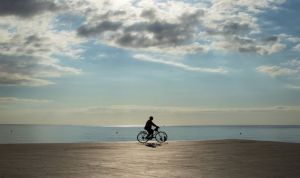Photography is rightly called an art due to various small details that one can put into it. These small details in turn can create stunning photographs that clearly distinguishes between a professional photographer from an amateur one. It requires a little training and a eye for detail to improve your photography skills significantly.
Here are some of the tips which a photographer can follow to bring their photographs to life:
- Avoiding Camera Shake: The most basic tip to improve your photography skills is to avoid the shaking of your camera. It results in avoiding the blur in the photograph. To follow it, use both hands, one around the body and one around the lens and hold the camera close to your body for support.

- Using a polarising filter: The polariser is arguably the best filter for your camera lens. This filter helps reduce reflections from water as well as metal and glass. It improves the colours of the sky and foliage, and will help give your photos the WOW factor. It will do all that while protecting your lens.

- Creating a sense of depth: Photographing landscape creates a true sense of depth in other words. It make the viewer feel like they are there. Using a wide-angle lens for a panoramic view and a small aperture of f/16 or smaller keeps the foreground and background sharp. Placing an object or person in the foreground helps give a sense of scale and emphasises how far away the distance is.
Continued…

- Not using the flash indoors: This is indeed a very controversial tip but the more useful tip is to not using the flash indoors. Using the flash indoors can render the images harsh and to avoid it, first, push the ISO up – usually ISO 800 to 1600. It will make a big difference for the shutter speed you can choose. Use the widest aperture possible – this way more light will reach the sensor and you will have a nice blurred background. Using a tripod or an I.S. (Image Stabilization) lens is also a great way to avoid blur.

- Choosing the right ISO: The ISO setting determines how sensitive your camera is to light and also how fine the grain of your image. The ISO we choose depends on the situation. When it’s dark we need to push the ISO up to a higher number, say anything from 400 – 3200 as this will make the camera more sensitive to light and then we can avoid blurring.

- Using the rule of thirds: It is a great composition technique to take breath-taking photographs. To use the rule of thirds, imagine four lines. Then imagine two lines horizontally across the image and two vertical creating nine even squares. Some images will look best with the focal point in the centre square. But placing the subject off centre at one of the intersecting points of the imaginary lines, will often create a more aesthetically composed photograph.

To get a hands on look on the various kinds of photography, click here.


